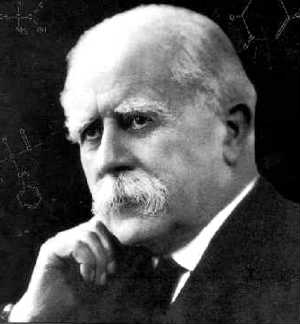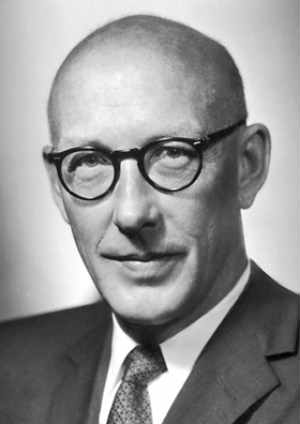The One Gene-One Enzyme Hypothesis
|
|
 Archibold Garrod
Archibold Garrod(1857–1936)
 Edward Tatum
Edward Tatum(1909–1975)
 George Beadle
George Beadle(1903–1989)
The one gene-one enzyme hypothesis was first proposed by the English physician Archibald Garrod in 1909. It suggests that each gene codes for a single, specific enzyme. In other words, under this hypothesis, each gene would be responsible for the enzyme facilitating a single step in a metabolic process.
In the early 1940s American geneticists Edward Tatum and George Beadle evaluated Garrod's hypothesis using the fungus Neurospora. Their findings led to the acceptance of this view. The main thrust of their research was to determine how exactly genes regulated enzymes and controlled biochemical reactions.
The key experiments involved exposing the fungus to x-rays, creating mutant strains. After irradiation spores were first grown in tubes with a complete medium containing all necessary amino acids, vitamins, and other organic substances. The various strains were transferred to tubes containing a minimal medium with some specific nutrient omitted. They focused on those strains that were unable to grow on some specific minimal medium that could support the non-mutated form of the fungus. The experiment therefore showed that, each mutated strain required the addition of a specific nutritional element to the medium for its survival. Their results suggested that each mutant had specific mutation in a particular gene that blocked at a particular metabolic step that required a specific enzyme that the strain could not produce.
This experiment was of profound importance because it provided a basic explanation of how genes work at the molecular level. However, we now know that the picture is more complex. Not all genes direct the construction of enzymes. Some code for structural proteins, such as collagen or keratin. Moreover, different RNA splicing options can produce distinct polypeptides from the same gene. In addition, some functional proteins, such as the various hemoglobins, are composed of two or more polypeptide chains, derived from two or more different genes. Some genes, such as those for tRNAs do not even code for a polypeptide.
However, Tatum and Beadle's work remains significant because their findings with regard to the one gene-one enzyme hypothesis provided, for the first time, evidence that a particular gene produces a particular molecular product.
The 1958 Nobel Prize in Physiology or Medicine was divided, one half jointly to Beadle and Tatum "for their discovery that genes act by regulating definite chemical events" and the other half to Joshua Lederberg "for his discoveries concerning genetic recombination and the organization of the genetic material of bacteria".